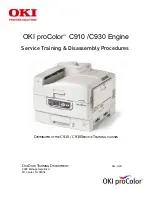
c
Click
AirPort
.
d
Click
Advanced
.
e
Click
TCP/IP
.
The “Router” entry is typically the wireless access point.
In Mac OS X version 10.4 and earlier
a
From the menu bar, click
Apple menu
System Preferences
.
b
Click
Network
.
c
From the Show pop-up menu, select
Airport
.
d
Click
TCP/IP
.
The “Router” entry is typically the wireless access point.
2
Type your user name and password when prompted.
3
Click
OK
.
4
On the main page, click
Wireless
or another selection where settings are stored. The SSID will appear.
5
Write down the SSID, security type, and the WEP key/WPA passphrase (if shown).
Notes:
•
Make sure you copy the network information down exactly, including any capital letters.
•
Store the SSID and the WEP key or WPA passphrase in a safe place for future reference.
C
HECK
YOUR
WEP
KEY
OR
WPA
PASSPHRASE
If your wireless access point is using Wireless Equivalent Privacy (WEP) security, then the WEP key should be:
•
Exactly 10 or 26 hexadecimal characters. Hexadecimal characters are A–F, a–f, and 0–9.
or
•
Exactly 5 or 13 ASCII characters. ASCII characters are letters, numbers, and symbols found on a keyboard. ASCII
characters in a WEP key are case-sensitive.
If your wireless access point is using Wi-Fi Protected Access (WPA) security, then the WPA passphrase should be:
•
From 8 to 63 ASCII characters. ASCII characters in a WPA passphrase are case-sensitive.
or
•
Exactly 64 hexadecimal characters. Hexadecimal characters are A–F, a–f, and 0–9.
Note:
If you do not know this information, then see the documentation that came with the wireless network, or
contact the person who set up your wireless network.
D
ISCONNECT
FROM
VPN
SESSION
When you are connected to another network through a VPN connection, you will not be able to access the printer
over your wireless network. End your VPN session, and try printing again.
Troubleshooting wireless setup
24













































